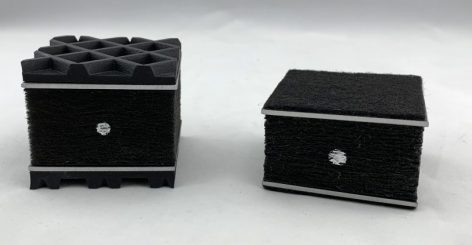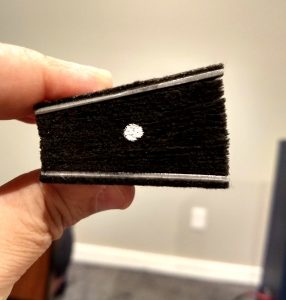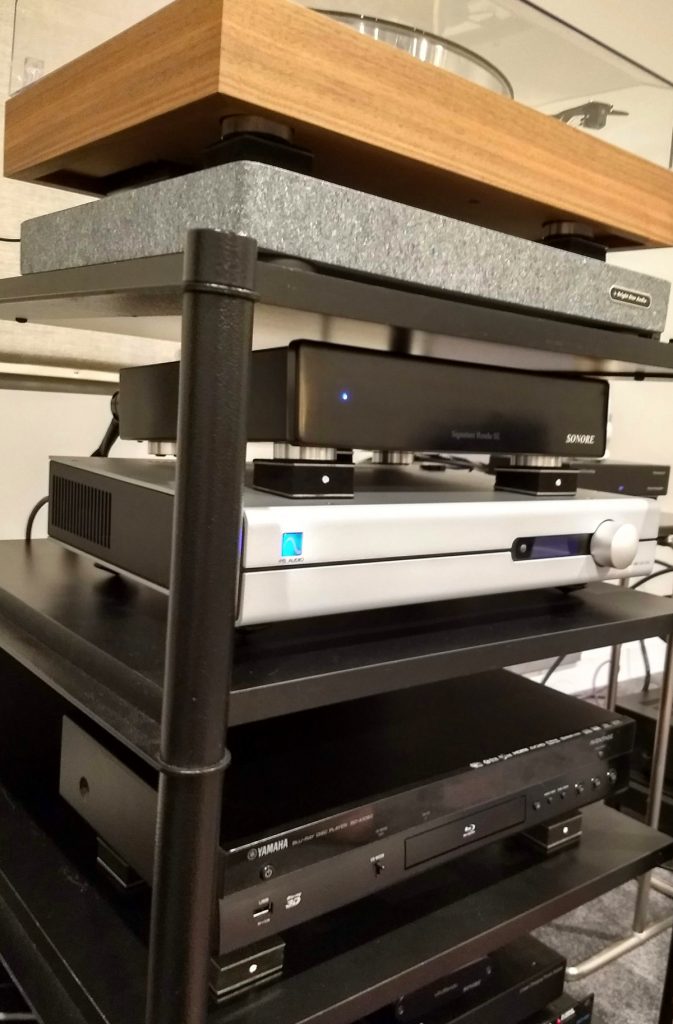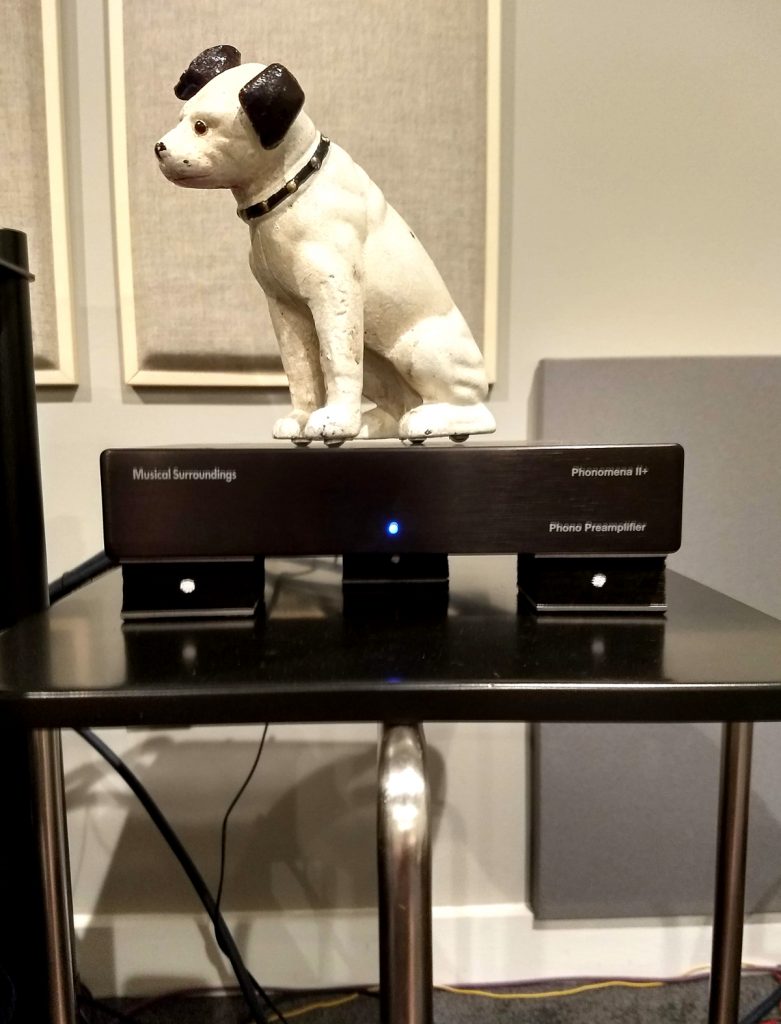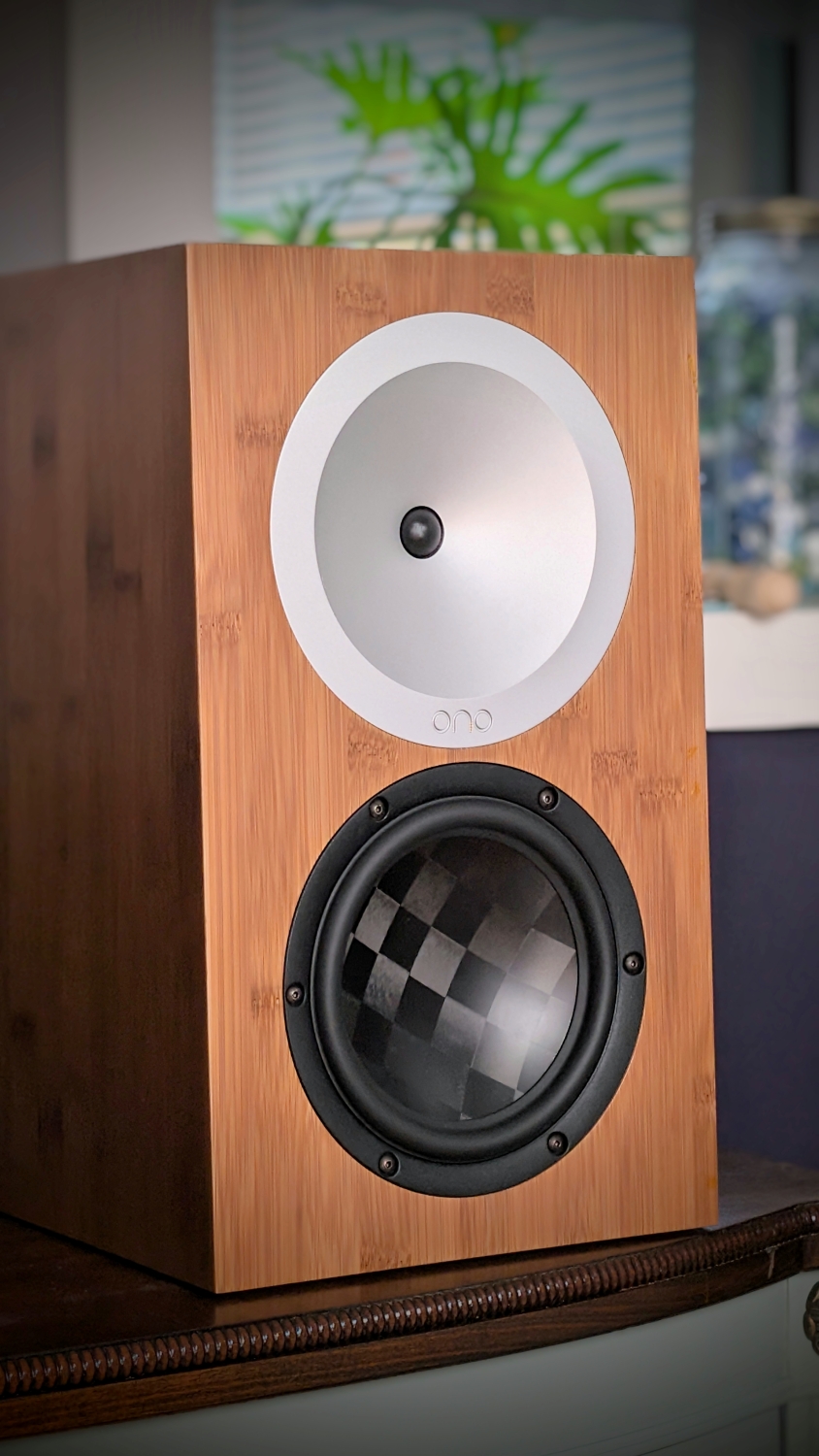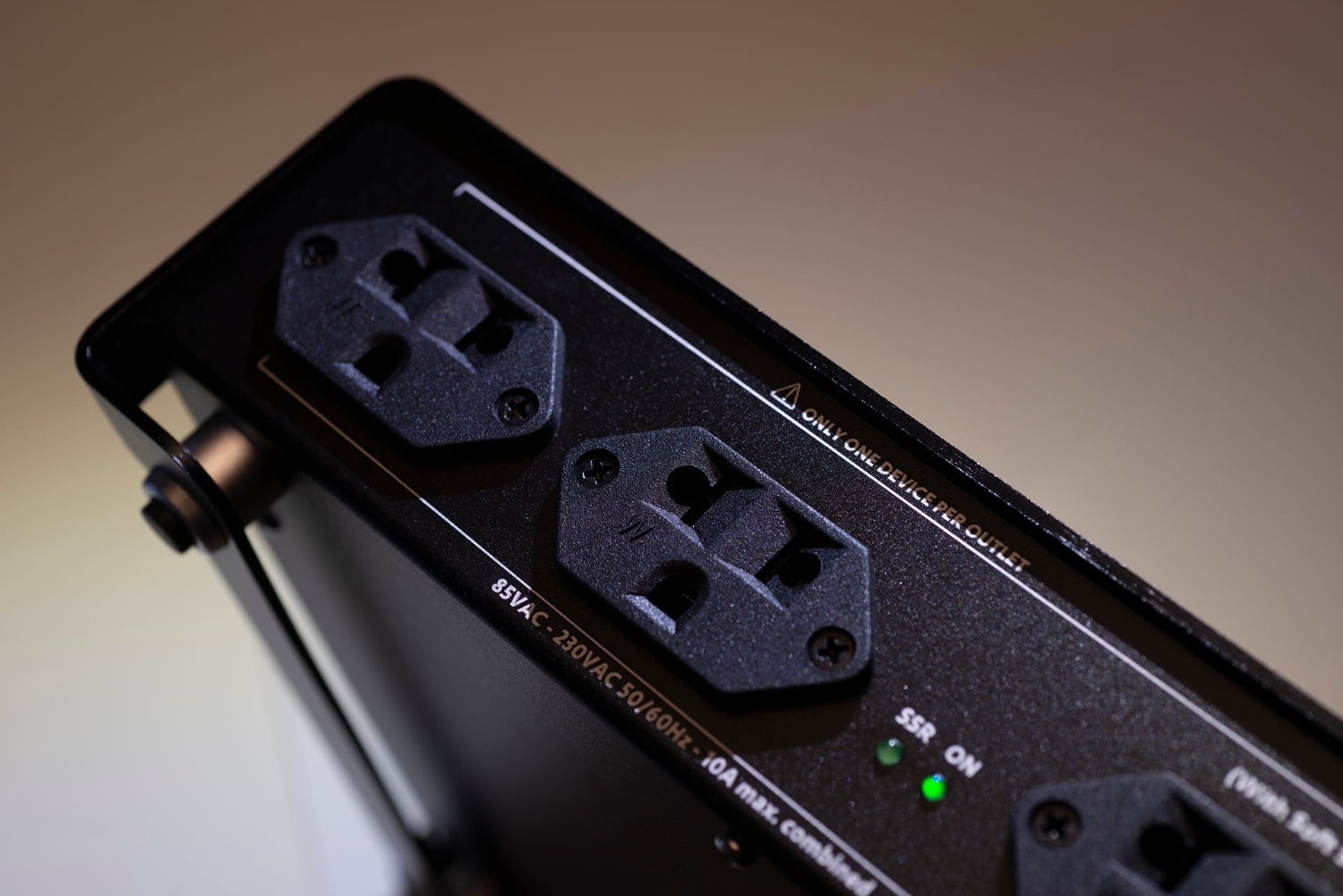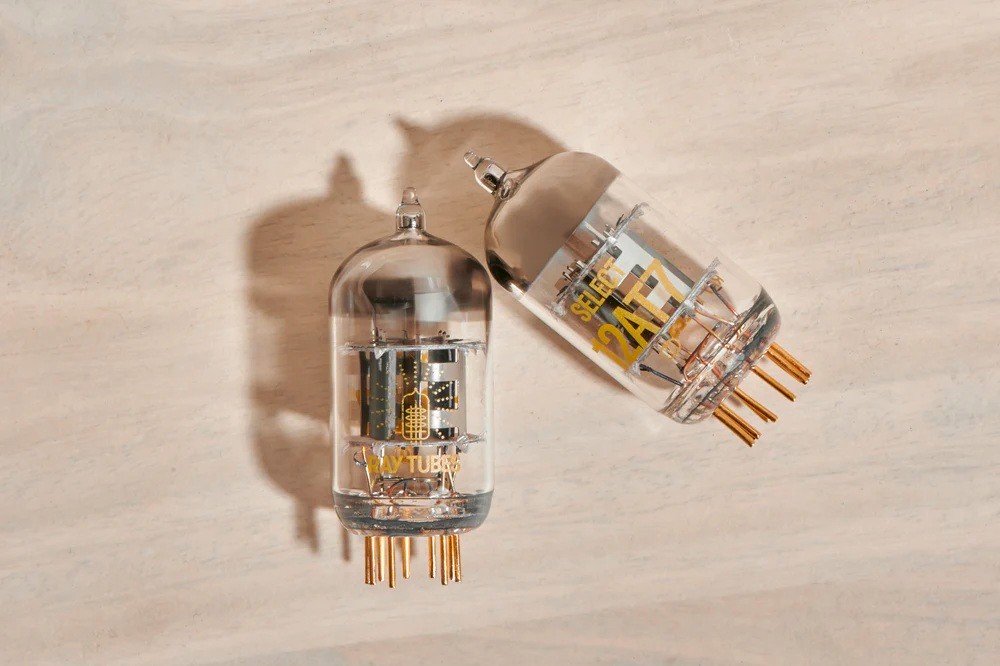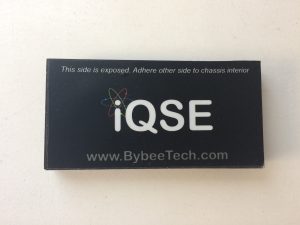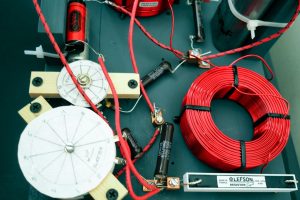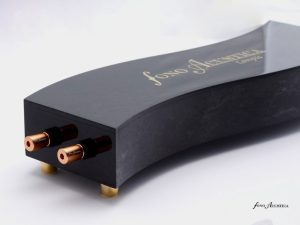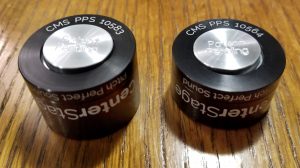Vibrations. They occur in every aspect of the listening room environment, whether that room is dedicated to the listening experience, or just happens to be your living room—or any other room where your audio equipment resides, for that matter. The problem is—even when you think you've taken the greatest precautions to prevent spurious vibrations from intruding on your listening enjoyment—sometimes they just unexpectedly announce their presence, often from the least likely of sources. Taming those vibrations can often be a bit of a chore.
Interior walls and in-room objects vibrating due to airborne transmissions are difficult enough to address (especially in a room with two subwoofers active). The part of the equation that a lot of audiophiles seem to neglect is vibrations from within their equipment stack. And how those vibrations contribute to the coloration of the sounds pouring forth from your beloved system. It's not only the vibrations you can hear that are driving you crazy; it's the vibrations you probably aren't aware of that are causing much of your music to be reproduced with less than absolute fidelity. All the various boxes and bits are very likely affected by airborne vibrations: source equipment such as CD players, streamers, external power supplies, and the like. That's where AV RoomService and their EVPs come into play.
When Norman Varney of AV RoomService reached out to me about this same time last year, it was to introduce me to their new line of vibration and resonance control products, the EVPs, which, at the time, were limited to Medium Density (think, turntables, heavy pieces of source equipment) and High Density (think subs, loudspeakers, equipment racks). I auditioned both the MD and HD versions; with them placed in my turntable setup and underneath both subwoofers, the effect was nothing less than stunning! You can read my review HERE; the bottom line was that my way of listening to music was forever transformed—I was completely unaware of how those vibrations were affecting the purity of my music, especially via analog playback.
New for this year, we have EVPs that are now available in a Low Density version, which are aimed squarely at providing isolation for the lightweight equipment in your rack. The two other varieties would probably not effectively address this situation; the design of their components is intended to address the vibration spectrum of heavier gear. The LD EVPs are much lighter in weight, and are recommended for equipment where each EVP carries a load of between 1 and 3 pounds. That covers a broad selection of equipment, from preamps to CD players, streamers, etc. They also differ from the HD and MD EVPs in that their construction is somewhat more delicate, and requires some level of special handling during installation. The level of rigidity of the LD EVPs is significantly less than the other versions, which results in them being much more pliant in addressing the range of vibrations they're designed for. As with the previous versions, they're also available with both felt and rubber topcoat finishes. Norman tells me that the rubber finish seems to work better with lighter equipment that's connected with heavy cables, where the rubber coating gives a bit more grip in keeping the EVP securely placed. I didn't have that particular situation in my setup, so I chose the felt outer layer for all the new EVPs I auditioned.
For those of you completely unfamiliar with the EVPs, they come in a variety of configurations of differing sizes and materials, depending on your particular needs. Their core construction appears to be basically the same throughout the range, with multiple layers of compressed, high-density molded glass fibers that are attached to each other with a proprietary damping compound. A cold-rolled steel plate is then attached to both the top and the bottom of the EVP. The purpose of the steel plate is to allow the use of spikes or cones on your equipment without compromising the internal structure of the EVP, as well as providing even weight distribution across the surface of the EVP. The major appearance difference between the various incarnations is the outer layer, which is either a felt pad or a honey-combed layer of rubber, and is determined by your intended use. While the overall thickness of the three different grades of EVPs that I've received appear to me to be about the same, the varying densities of the glass fibers used in the different EVP models determine the weight rating appropriate for the equipment they're intended to be used with. The LD EVPs have a small white dot in place on one side to help distinguish them from the other versions (blue dot equals HD, no dot equals MD).
I was completely blown away by how great the impact of the heavier EVPs was on my analog playback, even though I logically expected that some level of benefit would probably be evidenced by their inclusion in my system. I just wasn't expecting it to be so very obvious! So, once again, I approached my upcoming experience with the LD EVPs with certain expectations—based on my previous experiences, I expected a lot. But at the same time, I couldn't help but entertain a certain level of doubt that an extreme level of improvement would be really obvious. Regardless, at this level of the audiophile experience, we grade improvements on a very incremental scale; the slightest improvement can result in the greatest increase in listening enjoyment. When I was deeply mired in mid-fi back in the seventies and eighties, it took the purchase of a new amp or pair of speakers to really rock my world!
Depending upon the configuration of your equipment setup and the particular pieces you plan on using the LD EVPs with, some level of care and trial and error will be necessary to get them maximally positioned. If the equipment in question uses traditional footers—or none—no problems, you just simply place the LD EVP underneath the stock footers, or underneath the equipment case if no footers are present. The only situation I encountered some difficulty with was my new Yamaha BDA-1060 universal disc player, where I also was using the shorter variety of tiptoes underneath the stock footers. As described above, the newer EVPs are much more pliant, and will flex and compress to a significantly greater degree than the heavier versions. So some level of care is necessary to get them perfectly centered underneath a conical footer. I ended up placing LD EVPs underneath the disc player, the Sonore Signature Optical Rendu (review forthcoming!), my Musical Surroundings Phonomena II+ phono preamp, and its dedicated linear power supply. I basically hung out at the equipment rack during extended bass solos, forte orchestral passages, and King Crimson's Larks' Tongues in Aspic, and was able to identify the pieces of equipment that seemed to be vibrating along with the music. And, whereas, the major thrust of my first experiences with the EVPs was probably predominantly with my analog equipment, this time it would be directed at both analog and digital—with a heavy emphasis on the digital side.
As with the HD and MD EVPs, there was no break-in or run-in period required for the LD EVPs. The improvements were obvious from the first needle drop or the first note of digital playback. It's shocking to think how such a small consideration—like the potential for vibration affecting the signal purity of a digital streamer or phono preamp power supply—can contribute significantly to the overall level of haze and temporal smear in your system's sound. It seems very logical in an analog system, where all the processes are mechanical, that reduced vibrations will lead to improved performance. It's perhaps less obvious and intuitive that a CD transport or player (that's inside a sealed chassis), would also be just as susceptible to noise induced by vibrations. And that's basically what this is all about: reducing the level of vibration induced noise that's coloring the sound output by all your devices.
While one might logically wonder whether the LD EVPs could make a significant difference, that difference is surprisingly clear, and not at all subtle. Your system's resultant sound will be rendered with greatly improved clarity, and there'll be more air and space in the sound. And expect a much improved soundstage, accompanied by a more holographic stereo image. High frequencies are smoother, less etched, and more extended; mids are rendered with improved liquidity; and your bass will achieve better extension, musicality, and slam. If your loudspeakers are capable of delivering all of the above, they will now deliver a purity of sound that's like nothing you've previously ever heard from your system.
Using the Sonore Signature Optical Rendu streaming device, the performance was already significantly more resolving than with my baseline UltraRendu. In combination with the LD EVPs, the sound was taken to an altogether different level. And I've been raving about the new Yamaha universal disc player; I've actually been listening to CDs and SACDs with a recent frequency like never before. The sound is amazing; it's undeniably the best digital disc player I've ever owned. With the LD EVPs in place, the sound takes on a much more organic flavor; the sound coming from both the Signature Rendu and the Yamaha unit sound soooo much more analog-like than ever before! It's obvious now to me that even micro vibrations can reek havoc with the temporal balance of your system's sound. And in terms of actual analog sound, there's definitely a greater level of clarity when spinning LPs, now that the LD EVPs are protecting all stages of analog playback. It's taken a really great analog front end and turned it into a magnificent one!
When you reach a certain stage of the audiophile obsession, improvements to your system typically become incrementally small. When you can make a dramatic improvement to your system's performance for such a relatively modest investment, it's literally a no-brainer. Way back in the day, most audio equipment pretty much arrived in full rack-sized cases; nowadays, the boxes are much smaller and much more prone to being affected by airborne vibrations. EVPs work, and they work remarkably well. Well done, Norman, and all at AV RoomService. Very highly recommended! Your ears will thank you for making this acquisition!
Equipment Vibration Protector (Low Density) 2-Inch Square
Retail: $39.00 per unit
AV RoomService, Ltd.
All images courtesy of AV RoomService and the author




